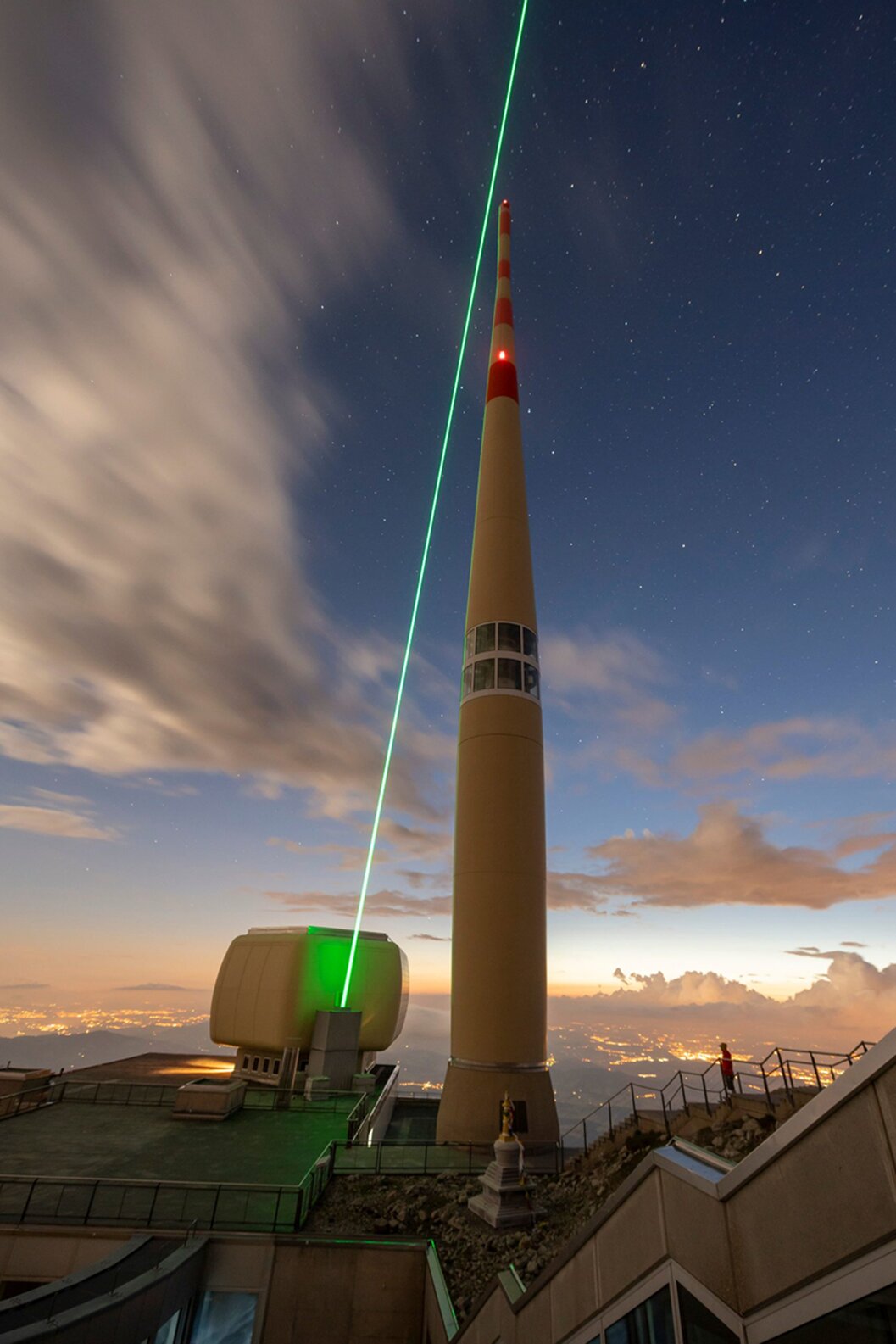Deflecting lightning with a laser lightning rod
From phys.org

Image of the 124-m-high telecommunication tower of Säntis (Switzerland). Also shown is the path of the laser recorded with its second harmonic at 515?nm. Credit: Nature Photonics (2023). DOI: 10.1038/s41566-022-01139-z
_____________________________________________________________________________________________
Forest fires, power cuts and damaged infrastructure…lightning fascinates and destroys in equal measure, causing as many as 24,000 deaths a year worldwide not to mention widespread destruction. Even today, the lightning rod invented by Benjamin Franklin is the best form of protection. And yet, these rods do not always provide optimal protection for sensitive sites.
A European consortium consisting of the University of Geneva (UNIGE), École Polytechnique (Paris), EPFL, hes-so and TRUMPF scientific lasers (Munich) has developed a promising alternative: the Laser Lightning Rod or LLR. After testing the LLR on the summit of Säntis (in Switzerland), the researchers now have proof of its feasibility. The rod can deflect lightning over several dozen meters even in poor weather. The results of this research are published in the journal Nature Photonics.
Lightning is one of the most extreme of natural phenomena. An abrupt electrostatic discharge of millions of volts and hundreds of thousands of amperes, lightning can be observed in a single cloud, between several clouds, between a cloud and the ground and vice-versa. As fascinating as it is destructive, lightning is responsible for up to 24,000 deaths a year. From power cuts and forest fires to damaged infrastructure, it also causes extensive devastation totaling several billion dollars.
Lightning-protection devices have changed little since 1752 when Benjamin Franklin invented the lightning rod—a pointed, conductive mast made of metal connected to the ground. The traditional rod is to this day still the most effective form of external protection: it protects a surface with a radius that is more or less equal to its height.
more ...
